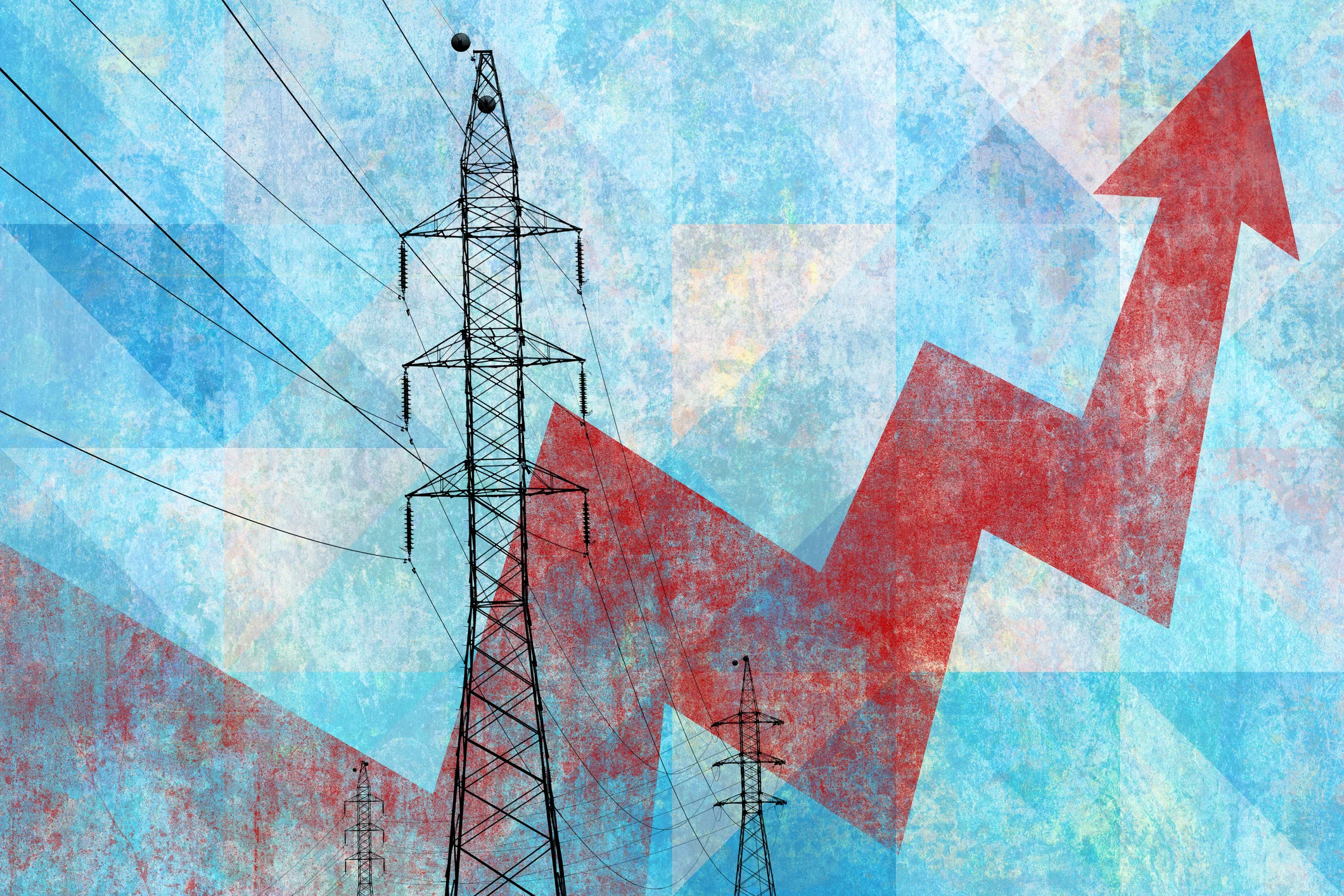In August, NPR reported that electricity prices for consumers are accelerating at twice the speed of inflation. These costs are caused by increased demand, which is driven by the rapid development and deployment of AI and data centers, supply chain and tariff challenges, and the erratic and volatile weather and temperature extremes caused by climate change. Distributed energy resources (DERs) like solar, battery energy storage systems (BESS), electric vehicles (EVs) and EVSE chargers, and smart home devices like smart thermostats and water heaters are useful tools for utilities in minimizing demand through the aggregate load shift that a distributed energy response management system (DERMS) provides.
What is a Distributed Energy Resource Management System (DERMS)?
Through the Internet of Things (IoT) and WiFI, DERMS software provides grid operators and program managers the ability to control and manage otherwise disparate DER assets. These assets can be used in initiatives like demand response programs, EV managed charging strategies, and virtual power plants (VPPs), each of which works through granular, remote device control. Effectively, when a program is initiated, operators can use DERMS software to enact various demand flexibility objectives such as lowering temperature set points, curtailing battery charging periods, or redistributing stored battery or ambient solar energy back into the grid.
These programs succeed through robust customer engagement: the more devices under control, the more thorough and precise the demand flexibility outcome. As such, marketing has taken on a new dimension for electric utilities as an integral part of the community outreach needed to educate and persuade consumers to participate in these programs, which have already proven useful. For example, there were approximately 10.3 million American households enrolled in residential demand response programs, which yielded approximately one terawatt-hour of energy, or, in this case, energy conserved.
That conserved energy represents money not spent by utilities either through expensive peak energy market prices or costly grid upgrades. Furthermore, demand flexibility programs aid in mitigating high power purchase agreement costs. On top of that? Customers want demand flexibility programs, both for the cost savings and energy security they provide.
The Difference in Grid-Edge & Grid DERMS
Not all DERMS are designed the same. While all DERMS are designed to shift load to control and manage devices, not all devices are the same, either. Grid DERMS were designed to manage utility-held DER assets like battery or solar installations developed at grid scale. By contrast, Grid-Edge DERMS manage the behind-the-meter DER assets already found in places like residential, commercial, and industrial properties. As such, behind-the-meter DERs represent a challenge to grid operators, as an intermittent resource: customers aren’t usually obligated to participate, even if they have enrolled, leading to uncertain outcomes. Or does it?
Enter: Topline Demand Control
Topline Demand Control (TDC) is the novel combination of the Shift Grid-Edge DERMS, forecasting technology, AI, and model predictive control. These technologies function to manage behind-the-meter DER assets at a granular level, forecast the maximum available capacity into the future to raise situational awareness, determine potential grid events, and optimize commands sent to devices to ensure the total demand quantity requested.
Why You Should Invest Now in DERMS
From supply chain and tariff issues confounding the development of grid-scale renewable energy projects to the sunk-cost fallacy of sticking with aging legacy load control systems, utilities are struggling to meet demand with aging infrastructure and outdated grid models. Fortunately, not only are smart technologies more interconnected today than ever, a trend that promises exponential growth over time, but the adoption of behind-the-meter DER assets continues to proliferate. That means devices like the smart thermostats or water heaters already found in places like residential, commercial, and industrial properties are primed more than ever to integrate seamlessly into demand response program strategies.
As such, utilities can realize the potential revenue growth that can come from integrating new energy sources under a robust DERMS platform. While the challenges presented by a rapidly evolving tech landscape aren’t new, they are growing increasingly complex; finding solutions is becoming more important than ever. Whether it’s in enhancing DER technology strategies or growing your demand flexibility programs, finding the right DERMS solution is critical to managing your intended goals.
Future-Proofing Through DERMS
By offering distribution-level grid control to manage distributed energy resources (DERs), DERMS helps utilities leverage the diversified energy portfolio needed to meet rapidly rising national demand. The right DERMS features a robust library of potential device integrations and partners, which in turn lowers barriers between homeowners and utilities to the adoption of demand flexibility programs. The more delays in adopting DERMS programs, the more opportunities to miss peak load cost savings, tap into new device energy sources, and provide active and reactive power control that is now a necessity with such a dynamic and changing load shape.
– Stacia Secreriat, Digital Marketing Manager, Virtual Peaker
With an ever-evolving energy landscape, changes to government regulations and legislation are shifting how consumers use energy while challenging utility programs in previously unseen ways. Despite these challenges, demand flexibility programs have proven instrumental in dynamically meeting demand where and when it’s needed. These programs thrive the higher the customer enrollment and participation, and take time to develop: if you don’t begin scoping and planning for a DERMS solution now, you’re already behind the curve.
DERMS programs (like any new system) require an initial investment, set-up time, and customer recognition to gain momentum and create robust demand flexibility programs. While there are understandable hesitations about the cost of obtaining the right DERMS for your utility operation, investing now will pay off dividends on your return. This year, the current administration worked through the Department of Energy to maintain the status quo by deferring the planned retirement of several fossil fuel plants, which has already led to an estimated $3.1 billion in costs (in just over a month), and promises to continue to prove inordinately expensive. Practically, delaying the launch and development of these programs means paying higher wholesale prices during peak load times, losing control of a growing sector of renewable energy devices, and missing opportunities to provide evolving solutions for your customers’ needs.
What Are the Risks to Investing in DERMS?
Not all DERMS platforms are created equal. As mentioned above, Grid DERMS are used to manage utility-held DER assets, while Grid-Edge DERMS aggregate and control behind-the-meter DER assets. Additionally, DERMS are distinguished by the type of device integrations offered, capabilities, features, and functionality. Navigating these options in itself can be overwhelming, and tempting to stick with familiar (if outdated) solutions. Add to that the back-end integrations and system implementation with utility and IT teams necessary for the locational grid and for asset state information, and DERMS adoption becomes that much more complicated.
Consider evaluating potential DERMS vendors not only based on cost, but implementation requirements and efforts. Furthermore, it’s critical to have internal cross-department buy-in, to show cost savings and new revenue capabilities, along with the long-term benefits DERMS will provide after overcoming those initial efforts and costs. To better future-proof your utility operation, implementing the right DERMS for your needs is a long game, but one that can pay off in the end.
Qualities of a Robust DERMS Solution
Research suggests that while demand response programs are increasingly adopted, only a reported 16% of surveyed households even had the internet access and proper technology to participate at all in a demand response program, and only about 20% of that number actually do. Because customer outreach is crucial in evolving any demand flexibility program, customer engagement is imperative. Consider DERMS platforms that are customer-friendly, allowing for easy enrollment, adoption, and device management. Pay attention to solutions that offer tools like incentive processing and rich communication systems to educate homeowners about savings opportunities, and/or to communicate before and after peak events, in turn lowering back-of-office costs.
– Stacia Secreriat, Digital Marketing Manager, Virtual Peaker
Likewise, the right end-to-end DERMS solution includes management such as event-calling, forecasting, or event deployment software that keeps the user experience centered on customer satisfaction. Eliminating customer barriers to enrollment, engagement, and education saves you the effort of launching different programs that may not always communicate together, such as separate email solutions that don’t necessarily interface with distributed energy event management.
Lastly, modularity is key to minimizing costs and developing a future-forward solution. Because technology more than doubles in speed and capacity every year, the need for new features and functionality in the software solutions will also increase. Picking the right software partner from the outset ensures that they understand the current and future energy landscape and are anticipating your needs in real-time.
Quality Matters
Before we go, consider looking for DERMS providers with experience and a deep understanding of the energy landscape. For example, advanced functionality like Topline Demand Control has helped Virtual Peaker build a reputation as a powerful resource for utilities with institutions like Wood Mackenzie.
“Virtual Peaker has once again demonstrated strong market presence and innovation in the VPP space,” said Ben Hertz-Shargel, Global Head of Grid Edge, Wood Mackenzie. “Their grid-edge demand flexibility solutions offer utilities the power of a true virtual peaker plant.”
“Wood Mackenzie’s reports are valuable resources for the power and utilities industry, and we’re honored to have the hard work of Virtual Peaker highlighted,” said Dr. William Burke, Founder and CEO of Virtual Peaker. “This recognition underscores our commitment to helping utilities unlock the full potential of distributed energy resources, scale demand-side programs, and accelerate the transition to a cleaner, more resilient grid.”
Investing Now In DERMS Conclusion
Renewable energy isn’t simply the future for our planet; it is an existential inevitability, and utilities must adapt to meet rising and often erratic demand. DERMS are a simple and cost-effective way to achieve these goals, while embracing the future together, both utility providers and customers alike. With a burgeoning prosumer base, pursuing energy alternatives and increased conservation efforts has never been more important. With powerful reporting, education, and control mechanisms, SaaS-based, scalable DERMS are designed to solve tomorrow’s grid problems today. Is your operation ready?
This blog was originally published on January 19, 2022 with updates made on September 24, 2025.





